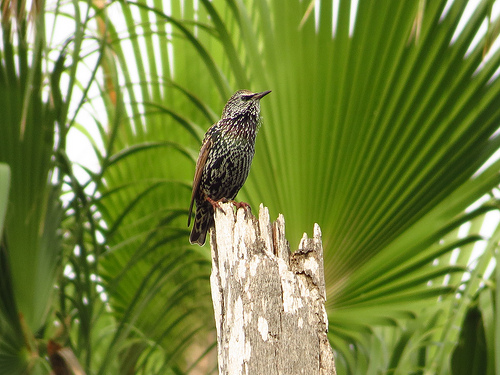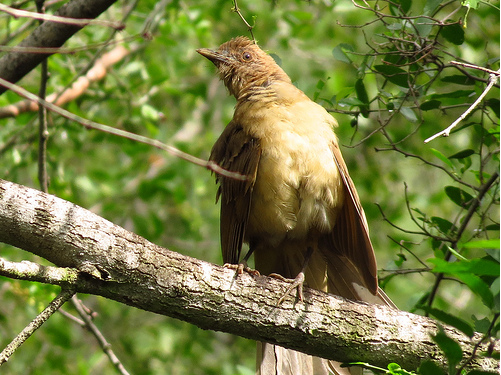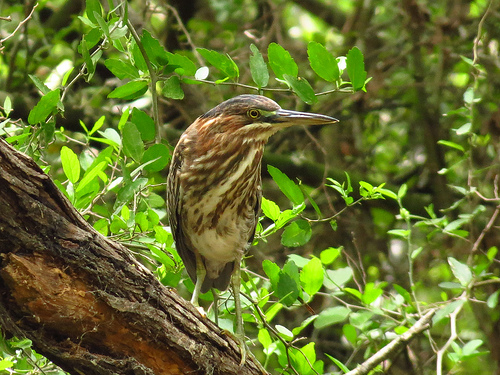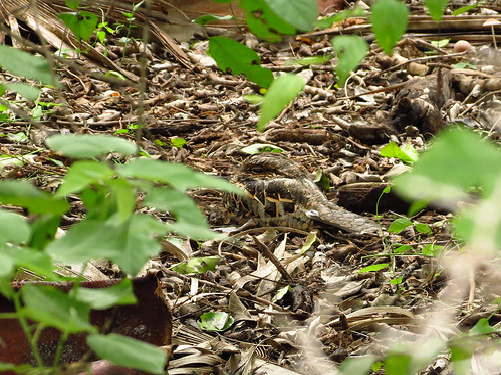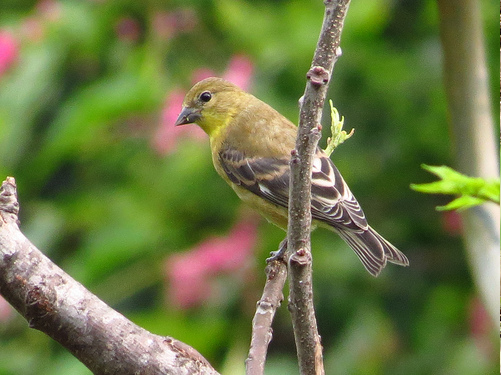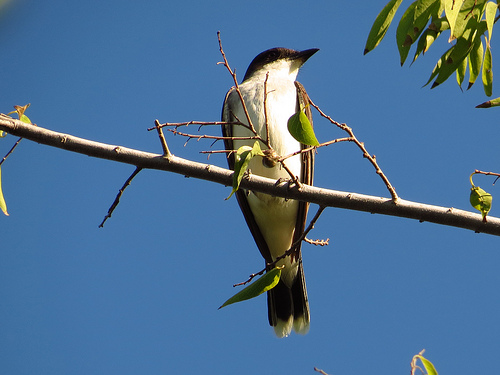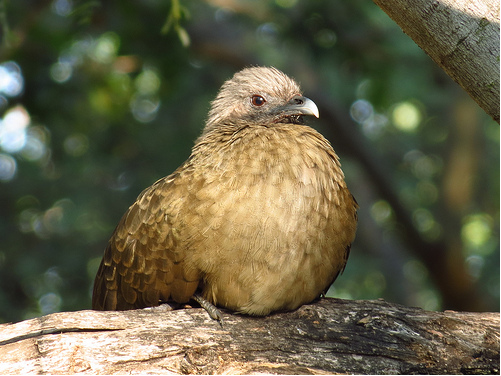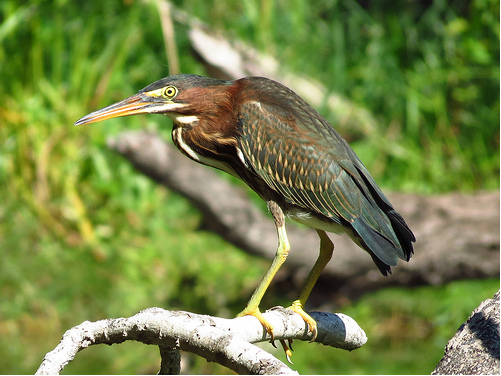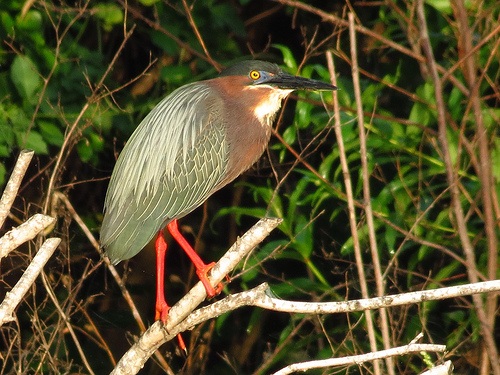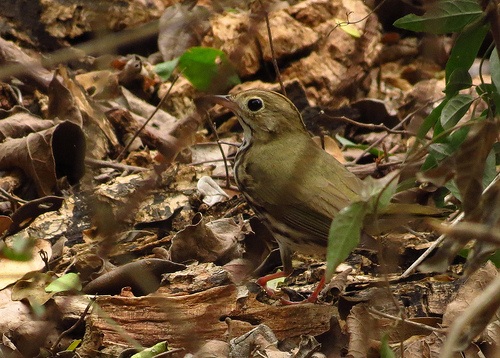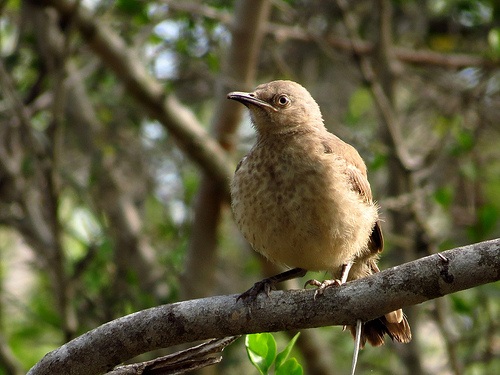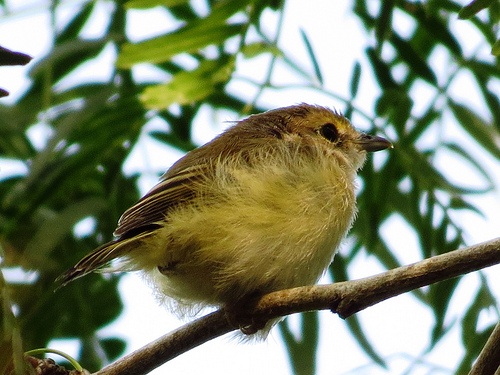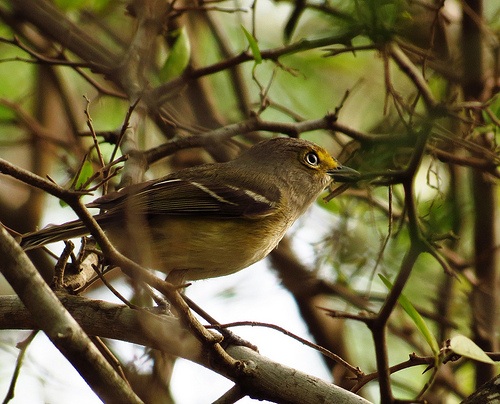This is a weekly bird report written and photographed by our Interpretive Guide John Brush.
Fall migration is well underway here at Quinta Mazatlan. Lots of brightly colored birds are moving through on their way south for the winter. We had 5 species of warbler this morning, along with some brilliant orange Baltimore Orioles. Our unusual visitor of an American Robin is still out in the park, and made a brief appearance this morning. There is still evidence of our local birds breeding – a family group of White-eyed Vireos foraged in a cedar elm by the amphitheater.
We enjoyed looking at this newly molted European Starling as we started off on the trails. Many birds have two molts a year: one in the fall (the pre-basic molt, in usually all the feathers are molted) and the other in the spring (the pre-alternate molt, where the wing and tail feathers usually are not molted). Starlings, however, only have one molt, which they undertake in the fall. The fresh feathers that come in have white tips. These tips wear off over the winter, so by spring the starlings have that glossy black and iridescent plumage. There is A LOT of complex molting patterns and information out there (which I’m not an expert on), but its fun to observe the drastic changes seen in starlings.
One of my favorite Quinta Mazatlan birds, the Clay-colored Thrush, has had a huge presence in the park lately – just about can’t miss them if you go along the Ruby Pond or Wildcat trails. This one was enjoying a sunny spot along the Wildcat trail.
One of this year’s brood of Green Heron made an unexpected appearance at the Mesquite trail pond – maybe with all the rains a big dish of tadpoles would be on the menu. It gave us the wary eye as it waited for us to move away from its (small) foraging spot.
We spent a good amount of time searching, but we finally spotted a Common Pauraque in the traditional spot along Bougainvillea Lane. The search may be tough, but the reward is always worth it.
My Bird of the Day for this week is the lovely, petite, sweet-sounding Lesser Goldfinch.
These beautiful little birds have been extremely active around the Valley the past month or so, a testament to the fact that they can breed all through September and into October. Listen for their sweet calls as they fly overhead as a cue to start searching for these little birds. They frequently come down to our century plant water feature in the amphitheater. The bird is the photo above is a female, lacking the black back and bright yellow breast of the male.
Have a great weekend!
Join us for a Bird and Nature Walk at 8:30am every Saturday throughout the summer at Quinta Mazatlan!

